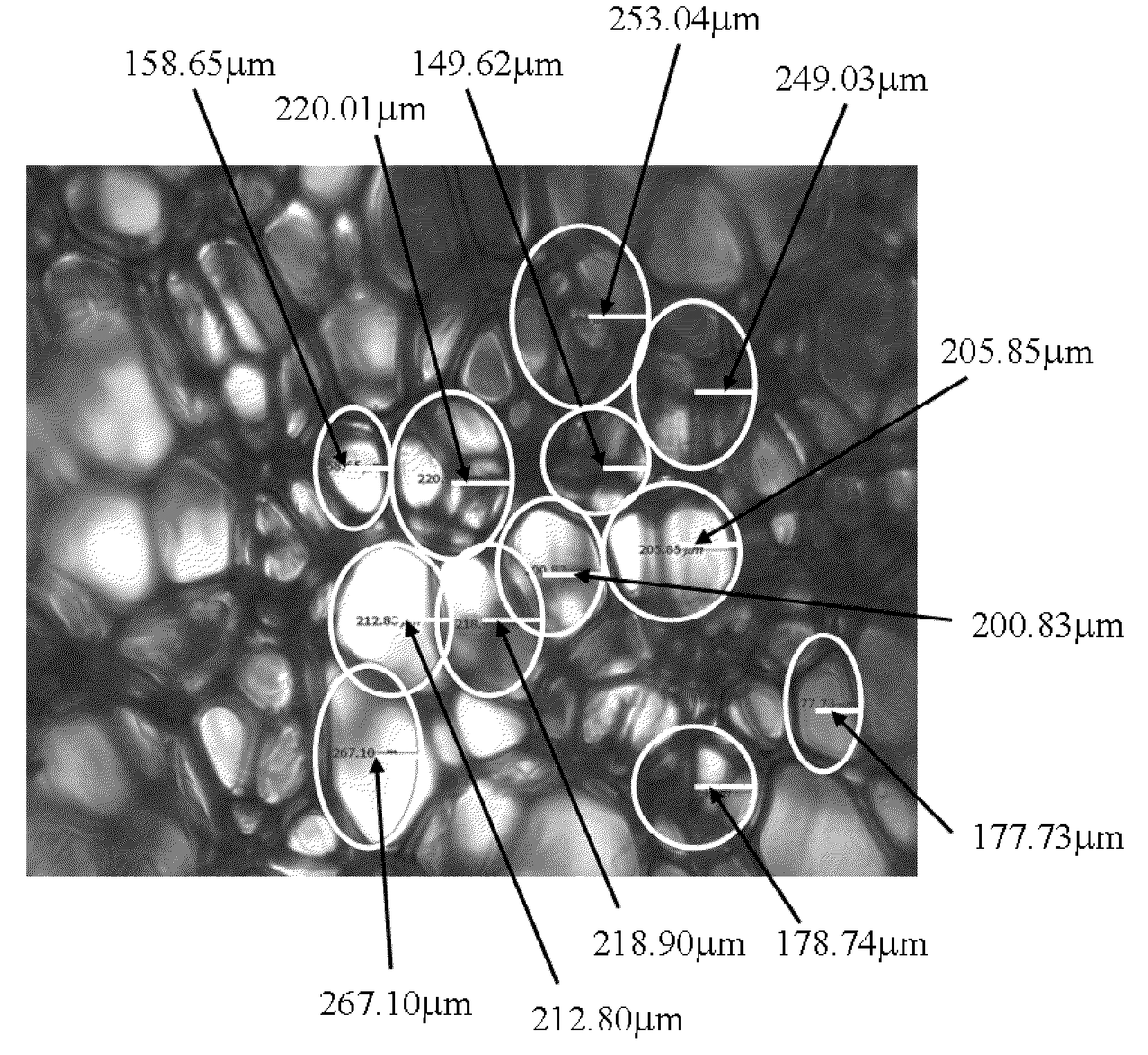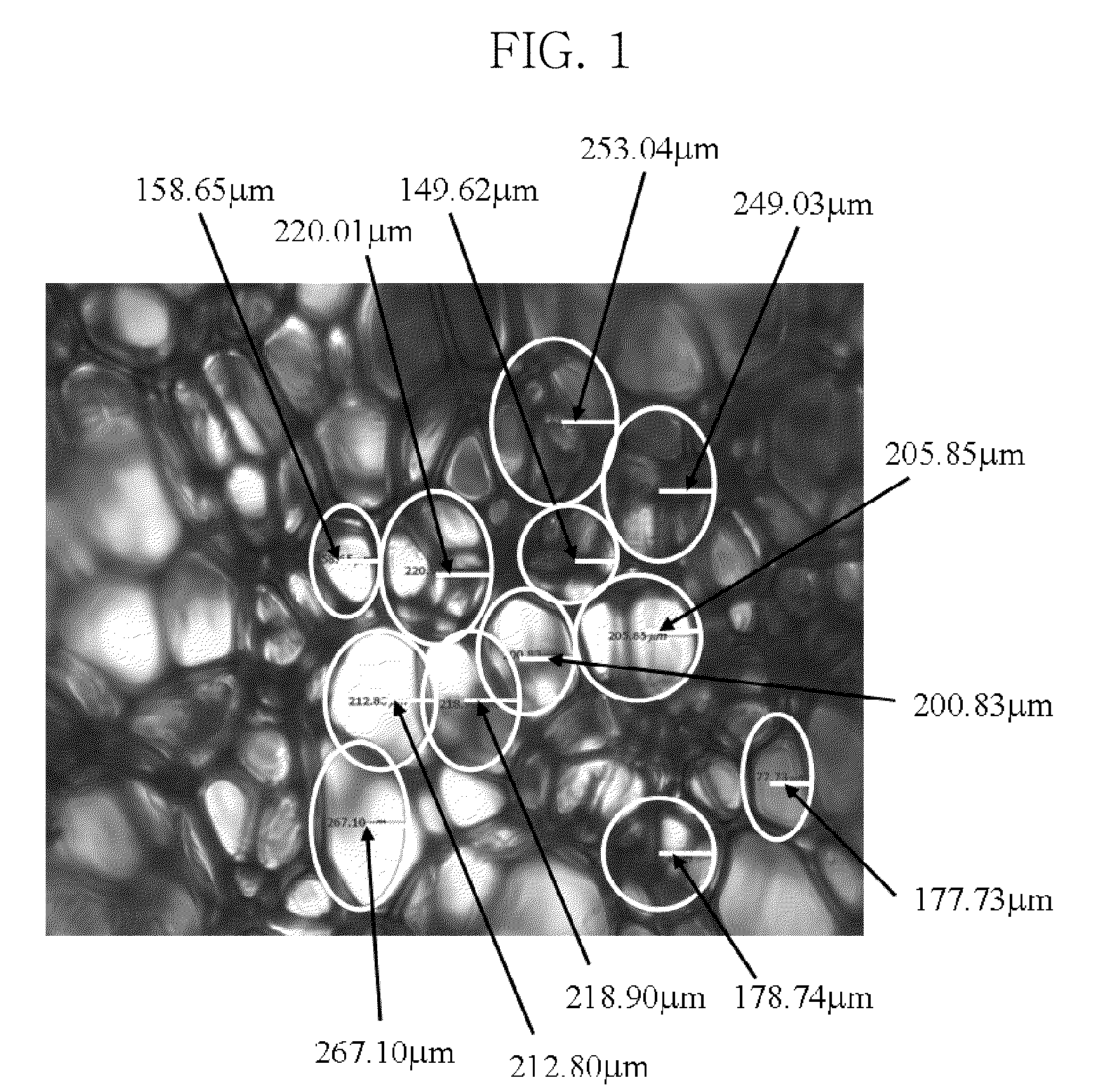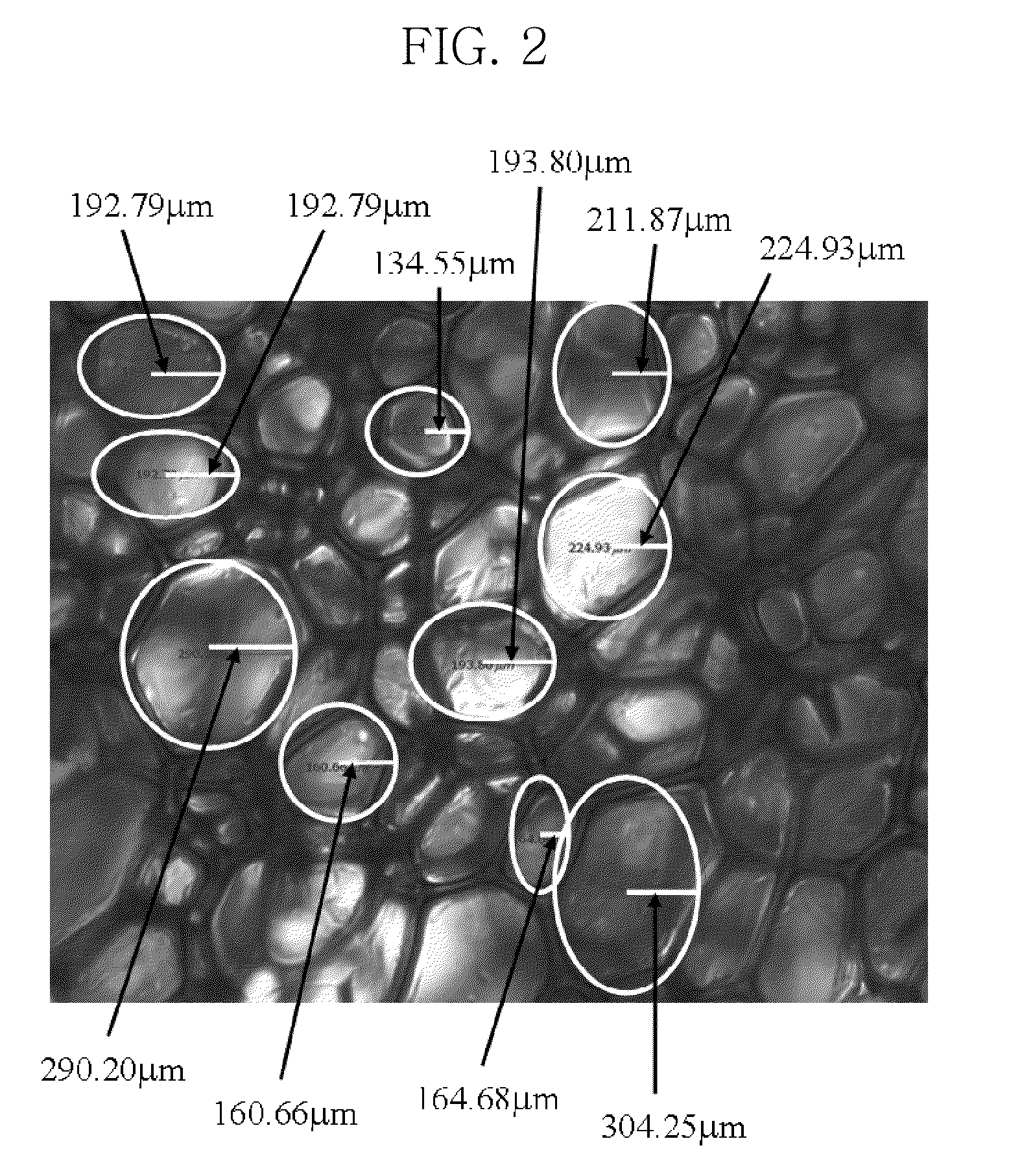Composition for rigid polyurethane foam and rigid polyurethane foam produced using the same
a technology polyurethane foam, which is applied in the direction of transportation and packaging, other chemical processes, chemistry apparatus and processes, etc., can solve the problems of unenvironmental friendly nucleating agents and blowing agents used in the production of polyurethane forms, and achieve the effect of improving the insulation efficiency of rigid polyurethane foam
- Summary
- Abstract
- Description
- Claims
- Application Information
AI Technical Summary
Benefits of technology
Problems solved by technology
Method used
Image
Examples
examples 1 to 12
[0073]This example is conducted to demonstrate the thermal conductivity of the rigid polyurethane foam. The following ingredients are mixed to prepare a pre-mixed polyol solution: 100 wt. parts of polyol consisting of 60 wt. parts of toluenediamine polyol (hydroxyl (“OH”) value: 350 to 550), 20 wt. parts of sucrose glycerin polyol (OH value: 360 to 490), 10 wt. parts of trimethylolpropane polyol (OH value: 350 to 450), 10 wt. parts of glycerin polyol (OH value: 168 to 670); 1.75 wt. parts of water; 2.3 wt. parts of an amine based catalyst; 2.5 wt. parts of a silicon based surfactant; and 16.5 wt. parts of a blowing agent. All of the additives are represented in parts by weight (wt. parts) relative to 100 wt. parts of polyol.
[0074]Then, after any one of ionic liquids listed in Table 1 is added to the pre-mixed polyol solution, the mixture is homogeneously blended into a uniform dispersion using a homo-mixer at 8,000 revolutions per minute (“rpm”).
[0075]To the prepared polyol dispersi...
experimental example
[0077]Each of the polyurethane foams fabricated in Examples 1 to 12 and Comparative Example 1 is subjected to a measurement for determining thermal conductivity. This measurement is made using a heat flow meter HFM 436 lambda by Netzsch Co. and the results are shown in Table 1. In addition, discrete cells of each polyurethane foam fabricated in Examples 1, 2, 5 and Comparative Example are illustrated by SEM images in FIGS. 1 to 4, respectively.
[0078]Moreover, as an amount of the ionic liquid in each of Examples 1 to 4 increases from about 0 wt. part to about 11 wt. parts relative to 100 wt. parts of polyol, corresponding thermal conductivities are measured, and the results are shown in the FIG. 5. Referring to FIG. 5, it can be seen that thermal conductivity is reduced by adding the ionic liquid, compared with the Comparative Example, where the ionic liquid is not added. Moreover, when the ionic liquid is added in the amount of about 0.5 to about 10 wt. parts, the polyurethane foam ...
PUM
| Property | Measurement | Unit |
|---|---|---|
| particle diameter | aaaaa | aaaaa |
| density | aaaaa | aaaaa |
| size | aaaaa | aaaaa |
Abstract
Description
Claims
Application Information
 Login to View More
Login to View More - R&D
- Intellectual Property
- Life Sciences
- Materials
- Tech Scout
- Unparalleled Data Quality
- Higher Quality Content
- 60% Fewer Hallucinations
Browse by: Latest US Patents, China's latest patents, Technical Efficacy Thesaurus, Application Domain, Technology Topic, Popular Technical Reports.
© 2025 PatSnap. All rights reserved.Legal|Privacy policy|Modern Slavery Act Transparency Statement|Sitemap|About US| Contact US: help@patsnap.com



